
-
Find the right food for your pet
Take this quiz to see which food may be the best for your furry friend.
Find the right food for your pet
Take this quiz to see which food may be the best for your furry friend.
Featured products
 Adult 7+ Perfect Digestion Chicken, Whole Oats & Brown Rice Recipe Dog Food
Adult 7+ Perfect Digestion Chicken, Whole Oats & Brown Rice Recipe Dog FoodScience Diet's breakthrough nutrition supports ultimate digestive well-being & healthy microbiome for dogs age 7+
Shop Now Adult 7+ No Corn, Wheat, Soy Chicken & Brown Rice Dog Food
Adult 7+ No Corn, Wheat, Soy Chicken & Brown Rice Dog FoodSupports energy level and beautiful coat in mature dogs
Shop Now Adult Perfect Weight & Joint Support Chicken Recipe Dry Dog Food
Adult Perfect Weight & Joint Support Chicken Recipe Dry Dog FoodThis weight management and mobility support dog food was created with Hill’s unique understanding of the biology of overweight dogs.
Shop NowFeatured products
 Perfect Weight Salmon & Vegetable Canned Cat Food
Perfect Weight Salmon & Vegetable Canned Cat FoodOver 70% of cats lost weight within 10 weeks when fed this nutrition
Shop Now Adult Savory Chicken Entrée Cat Food
Adult Savory Chicken Entrée Cat FoodPrecisely balanced nutrition with the delicious taste of savory minced chicken to help fuel the energy needs of cats during the prime of their life
Shop Now Adult Perfect Digestion Chicken, Barley & Whole Oats Recipe Cat Food
Adult Perfect Digestion Chicken, Barley & Whole Oats Recipe Cat FoodScience Diet's breakthrough nutrition supports ultimate digestive well-being & healthy microbiome
Shop Now -
Dog
- Dog Tips & Articles
-
Health Category
- Weight
- Food & Environmental Sensitivities
- Urinary
- Digestive
- Joint
- Kidney
-
Life Stage
- Puppy Nutrition
- Adult Nutrition
- Senior Nutrition
Cat
- Cat Tips & Articles
-
Health Category
- Weight
- Skin & Food Sensitivities
- Urinary
- Digestive
- Kidney
-
Life Stage
- Kitten Nutrition
- Adult Nutrition
Featured articles
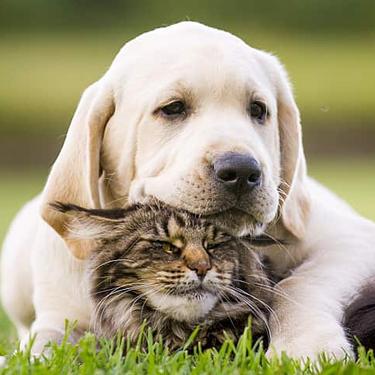 The Incredible Science Behind Your Pet's Microbiome
The Incredible Science Behind Your Pet's MicrobiomeLearn what a pet's microbiome is, how it contributes to your pet's gut & overall health, and why nutrition is important in maintaining healthy microbiomes.
Read More Pet Food Storage Tips
Pet Food Storage TipsDiscover how and where to store your dry, as well as canned, dog and cat food. Learn how to find the "best before" dates on all Hill's pet food packaging.
Read More Water
WaterDiscover why water is the most important nutrient for your dog or cat to live a healthy life. Find out how much water your pet should consume each day.
Read More -
Find the right food for your pet
Find the right food for your pet

Socializing a cat into a new family takes just as much patience as it does the love you have for her. Even an adult cat adopted from an animal shelter may be frightened, shy or unsure of her new housemates, no matter welcoming they are at heart. Here's how to give your new companion plenty of time and space to become acquainted with her new home and the people who live there.
1. Let Her 'Map' It Out
Your job during cat socialization is to see things from your cat's point of view: She's frightened, in a strange environment inhabited by "giants" (you and your family) who always want to hug her and scoop her up. This can be overwhelming, especially for timid cats. With this in mind, instruct your family to keep a safe distance as she makes her way around the house. She needs time to smell, investigate, and ultimately identify safe places she likes to escape to for a bit. This allows her to develop her own internal "map" of the house by learning whose room belongs to whom.
2. The Gentle Giant
At the very beginning, everyone should sit quietly or go about their business. If your cat comes to you, place your hand down slowly to allow her to sniff. Moving quietly, start petting your new cat on the back. If she allows it, stroking her cheeks is also a fine way to greet her as she rubs her scent onto you, thus marking you as her property. Watch her tail for signs of distress or affection; cat tails can tell you how they're feeling.
3. There's the Rub
If your cat has been hidden away for a while, or hasn't seen certain people for some time, she may be fearful around them as if they're new again. Make sure your family and friends let her sniff them at her leisure—cat behaviorist Marilyn Krieger suggests extending an index finger to start. It may take her a few minutes to connect (or reconnect) that scent with a special ally. Nonetheless, she'll let you know when the connection is made by rubbing against you, purring, or giving the happy welcome-back "chirp" that some cats give when saying hello to someone they haven't seen in a long time.
4. Offer a Safe Place
Cat socialization should always include a safe place for her to go if she becomes frightened—not just when she's new to the home. You should leave her crate or carrier in the room at the start so she has a place to retreat to if she is startled. Place a towel or something soft inside so she can snuggle up. A cardboard box with a door cut out for easy entrance and exit is also a simple refuge to help a socializing cat develop confidence in you over time.


Tasty Tips
5. Reward Social Behavior, Ignore the Rest
When your cat comes out to investigate you and your family, greet her with praise, treats, and gentle strokes. If she hides, just ignore her instead of chasing after her. It's important to reward desirable behavior and simply ignore undesirable responses during the ongoing cat socialization process. The more receptive you are to her affection when she's ready to give it, the less shy she'll be.
6. Gain Trust through a Routine
Cat socialization is easier when she can rely on the casual nature of others right from the start. This allows her to find security in knowing what to expect from guests and other residents of the home. Create a routine of petting and feeding as you host relatives she may see regularly. This can make strangers more approachable and easier for her to remember. Feed her at regular intervals will let her know she can rely on you as well, which in turn will make her feel less vulnerable. Food, as you can imagine, is a great motivator when building a healthy relationship.
Spend as much time as possible around your cat without directly interacting with her; don't pressure her to play or come to you. Watch television in the same room or read a book. As long as you stay in common places, she'll be confident enough to come and join you eventually.
It may be cliché, but take it slow. Cats are like people in at least one way: They can be outgoing, shy, aggressive, and passive. Depending on your cat's unique personality, she may warm up to the family quickly or it may take her several days. Let her set the pace, and never force her to accept affection she doesn't want to give. If you have other pets in the home, read our article about introducing a new cat to other pets.


Jeanne Grunert is a book author, blogger and freelance writer from Virginia. She cares for six rescued cats and a rescued dog named Shadow on her 17 acre farm in Virginia.
Related products

Over 70% of cats lost weight within 10 weeks when fed this nutrition

Feline Adult Perfect Weight Variety Pack

Science Diet's breakthrough nutrition supports ultimate digestive well-being & healthy microbiome

Precisely balanced nutrition with the delicious taste of savory minced chicken to help fuel the energy needs of cats during the prime of their life
Related articles
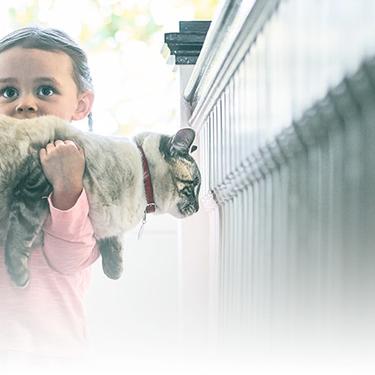
Discover how to identify cat sensitive skin and what you can do to help your cat thrive from head to paw.
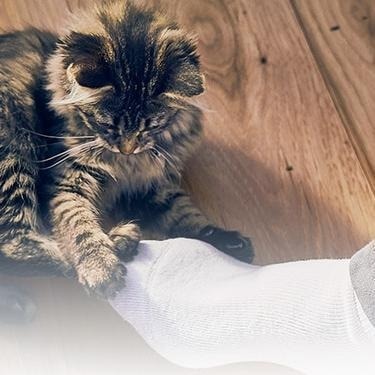
Discover which cat toys games your feline friend might like, and how they are great sources of exercise. Explore our library of articles to learn more.
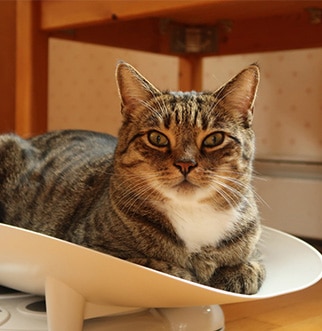
How do you get a cat to lose weight? Learn all about cat foods for weight loss, including how to choose weight control cat food and exercise tips.
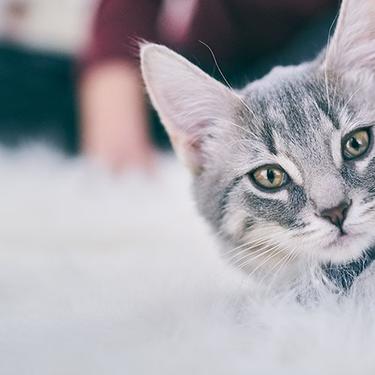
Discover the benefits of Hill's line of kitten foods and how they provide complete and balance nutrition for growing kittens.

Put your cat on a diet without them knowing
Our low calorie formula helps you control your cat's weight. It's packed with high-quality protein for building lean muscles, and made with purposeful ingredients for a flavorful, nutritious meal. Clinically proven antioxidants, Vitamin C+E, help promote a healthy immune system.
Put your cat on a diet without them knowing
Our low calorie formula helps you control your cat's weight. It's packed with high-quality protein for building lean muscles, and made with purposeful ingredients for a flavorful, nutritious meal. Clinically proven antioxidants, Vitamin C+E, help promote a healthy immune system.

